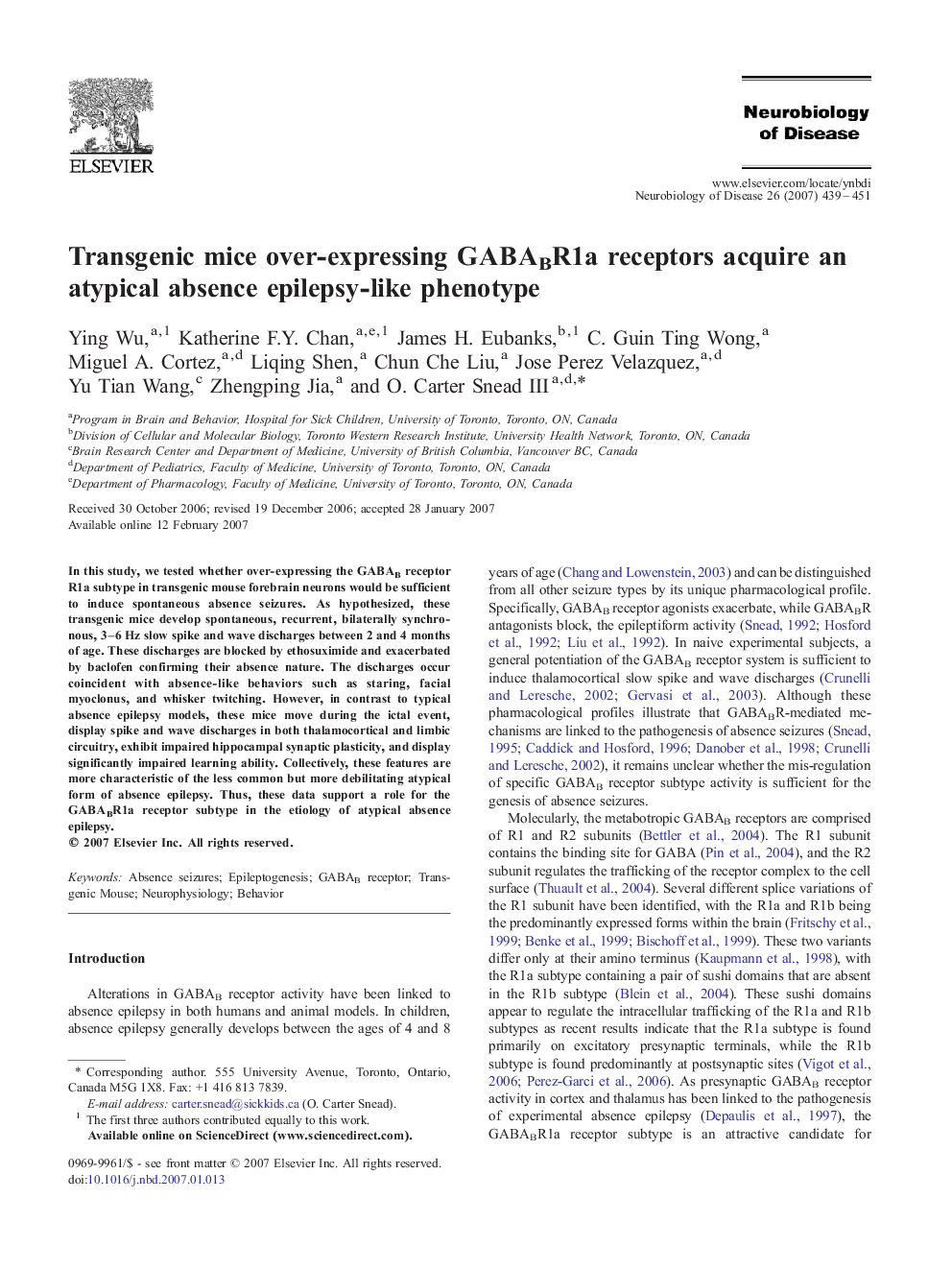| Article ID | Journal | Published Year | Pages | File Type |
|---|---|---|---|---|
| 3070915 | Neurobiology of Disease | 2007 | 13 Pages |
In this study, we tested whether over-expressing the GABAB receptor R1a subtype in transgenic mouse forebrain neurons would be sufficient to induce spontaneous absence seizures. As hypothesized, these transgenic mice develop spontaneous, recurrent, bilaterally synchronous, 3–6 Hz slow spike and wave discharges between 2 and 4 months of age. These discharges are blocked by ethosuximide and exacerbated by baclofen confirming their absence nature. The discharges occur coincident with absence-like behaviors such as staring, facial myoclonus, and whisker twitching. However, in contrast to typical absence epilepsy models, these mice move during the ictal event, display spike and wave discharges in both thalamocortical and limbic circuitry, exhibit impaired hippocampal synaptic plasticity, and display significantly impaired learning ability. Collectively, these features are more characteristic of the less common but more debilitating atypical form of absence epilepsy. Thus, these data support a role for the GABABR1a receptor subtype in the etiology of atypical absence epilepsy.
